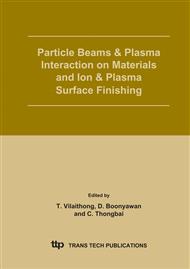p.47
p.51
p.55
p.59
p.63
p.69
p.75
p.81
p.87
Vacuum Arc Plasma Guns and Ion Sources
Abstract:
Vacuum arc plasma can be formed using particularly uncomplicated hardware, providing a means for laboratory scale formation of dense and highly-ionized metal plasma. The simplicity and versatility of the approach has led to its widespread use in recent times for both fundamental and technological applications. When embodied in a plasma gun configuration, the source can provide a valuable tool for plasma deposition of metal and metal-containing thin films, including in plasma immersion configurations. When embodied in an ion source configuration, high current beams of metal ions can be formed, and such beams have found good use for ion implantation and particle accelerator injection. Here we briefly review vacuum arc plasma guns and ion sources, outlining some of the hardware embodiments that have been developed at Berkeley and used for various materials modification applications.
Info:
Periodical:
Pages:
63-68
Citation:
Online since:
October 2005
Authors:
Price:
Сopyright:
© 2005 Trans Tech Publications Ltd. All Rights Reserved
Share:
Citation:


